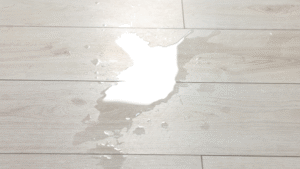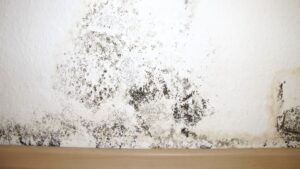Mold growth in homes is a widespread issue that can lead to serious health problems and costly property damage. Mold thrives in dark, damp, and poorly ventilated areas, often growing unnoticed until it becomes a significant problem. Whether you’re dealing with a small patch or a full-blown infestation, knowing where mold is most commonly found in a house can help you take preventive measures for mold remediation Sacramento before it spirals out of control.
Where Mold Grows Indoors
One of the dangers of having mold in your home is not knowing where it festers. Here’s a breakdown of where mold is most likely to grow inside your home:
Bathrooms
Bathrooms are one of the most common areas in homes for mold growth, and it’s easy to see why. These areas provide all the ingredients mold needs to flourish: constant moisture, poor ventilation, and organic materials like grout, drywall, and caulking.
Shower and Bathtub
Mold frequently forms in and around showers and bathtubs due to the constant exposure to water and steam. The grout between tiles, caulking, and even the shower curtain can harbor mold if not regularly cleaned and dried.
Under Sinks
The dark, enclosed space under the bathroom sink is another prime spot for mold, especially if there are small leaks or condensation around the pipes. Water trapped in these areas provides a perfect environment for mold growth.
Around Toilets and Windowsills
Leaks around the toilet or condensation on bathroom windows can lead to mold growth in these areas, particularly if the bathroom isn’t properly ventilated.
Prevention Tips
Install exhaust fans, wipe down wet surfaces after use, and regularly check for leaks. Keeping humidity levels under control (preferably below 60%) can significantly reduce the risk of mold in bathrooms. Professional services can help you get rid of mold from every home surface.
Kitchens
Like bathrooms, kitchens see frequent moisture from cooking, dishwashing, and refrigeration. However, mold growth in kitchens can sometimes be overlooked because it often forms in hidden spots.
Under the Sink
Just like in the bathroom, the area under the kitchen sink can be a breeding ground for mold, especially if there are any plumbing leaks or if water has pooled over time. Even small leaks can contribute to significant mold issues.
Refrigerator and Dishwasher
Mold may develop behind or underneath large kitchen appliances like the refrigerator or dishwasher, where humidity and condensation can accumulate. Leftover food particles, combined with moisture, can also create the perfect environment for mold to thrive.
Prevention Tips
Regularly check for leaks around kitchen appliances and ensure that your kitchen is well-ventilated to prevent moisture buildup. Consider wiping down surfaces prone to condensation and moisture regularly.
Basements and Crawl Spaces
Basements and crawl spaces are notorious for mold growth because of their naturally high humidity levels and poor ventilation. In many cases, these areas are also more prone to water intrusion from rain, groundwater, or plumbing issues, leading to dampness that lingers. Fighting mold in crawl spaces can be tricky, as it creeps into:
Basement Walls and Floors
Mold frequently grows on basement walls and floors, especially if there’s any seepage from cracks or improper insulation. Concrete can hold moisture, and the cool, damp environment in a basement allows mold to grow unchecked.
Stored Items
Cardboard boxes, old furniture, and other stored items in basements and crawl spaces can develop mold over time, especially if they’re kept in moist or humid conditions.
Crawl Spaces
Crawl spaces often have poor air circulation, which traps humidity and moisture, making them a prime location for mold. If there are any leaks or drainage issues in or around the crawl space, mold can quickly take hold.
Prevention Tips
Install a dehumidifier to keep humidity levels low (ideally below 50%) and inspect for leaks or cracks in basement walls. Sealing off crawl spaces and ensuring proper ventilation can also prevent mold growth.
Attics
Attics are another common area for mold to grow, mainly due to poor ventilation and roof leaks. Since they’re often out of sight, mold infestations can go unnoticed for long periods of time.
Roof Leaks
One of the primary causes of mold in attics is leaks from the roof. When water seeps in through cracks or holes in the roof, it can dampen insulation and wood beams, providing a breeding ground for mold.
Improper Ventilation
Many attics lack proper ventilation, allowing heat and moisture to build up. This creates a humid environment where mold can easily thrive, especially on wood, insulation, or any stored items. In certain instances, you may notice signs of mold within the vents in your home.
Prevention Tips
Ensure that your attic is properly ventilated and that there are no leaks in your roof. It’s also a good idea to check insulation regularly and remove any water-damaged materials to prevent mold from forming.
Laundry Rooms
Laundry rooms are another common spot for mold growth due to the high humidity generated by washing machines and dryers. If your laundry room lacks proper ventilation, mold can quickly take hold. There are certain dangers to removing mold yourself, so if you reveal mold behind your washing unit make sure to contact a professional for remediation.
Around Washing Machines and Dryers
Mold may develop around washing machines, especially in front-loading machines, where water can become trapped in the door gasket. Additionally, improperly vented dryers can lead to excess humidity and mold growth.
Behind Appliances
Mold can also grow behind washers and dryers, where heat and moisture are often trapped.
Prevention Tips
Make sure your laundry room is well-ventilated and that your dryer is properly vented to the outside. Clean the washing machine regularly, and keep the door open between uses to allow the interior to dry completely.
Get Rid of Mold for Good with West Coast Fire & Water
If you suspect mold in your home, don’t wait until it becomes a bigger problem. At West Coast Fire & Water, we specialize in professional mold remediation in Sacramento and the surrounding area to protect your health and property. Contact us today or give us a call at 916-945-9665 for a comprehensive mold inspection and removal plan that will help keep your home safe, dry, and mold-free.

Marketing Director, West Coast Fire & Water
Christian Ahlmann is the Marketing Director at West Coast Fire & Water, a California restoration company providing water, fire, mold, biohazard, storm, and reconstruction services across multiple locations. He leads brand, content, and demand programs that support rapid response and customer education. His background blends operational storytelling, community engagement, and crisis communications.



